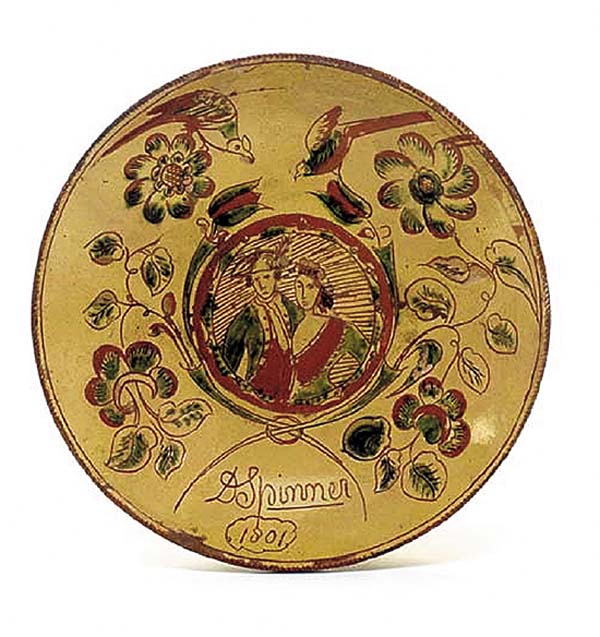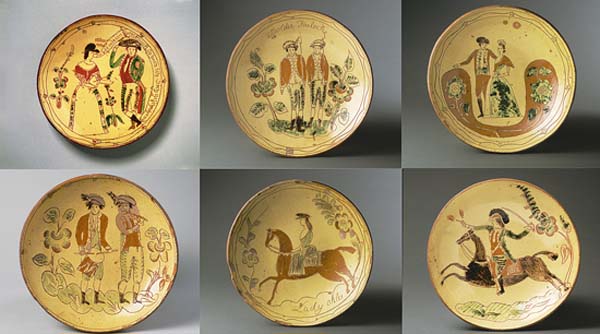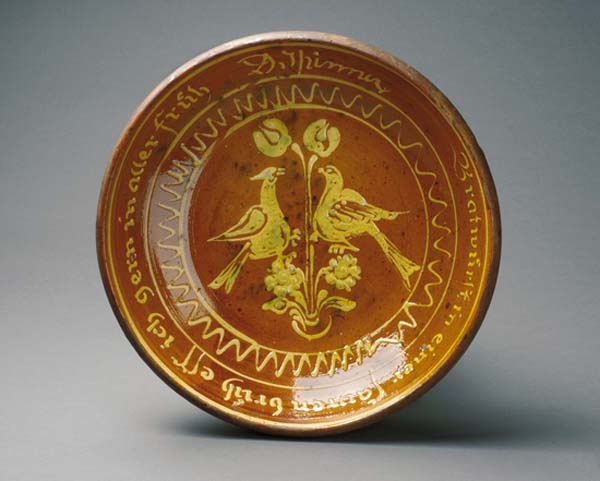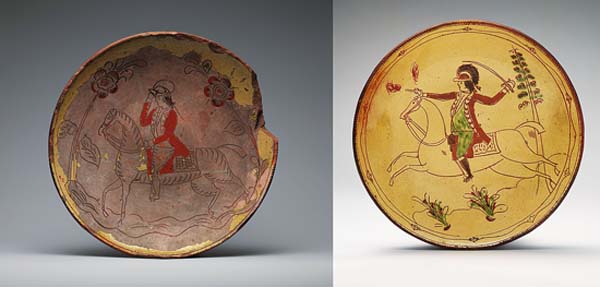David Spinner: An Early Important Pennsylvania-German Potter In Bucks County, Pa.
By Justin W. Thomas - March 08, 2024
When Edwin Atlee Barber (1851-1916) published the book, Lead Glazed Pottery, Part First (Common Clays): Plain Glazed Sgraffito And Slip Decorated Wares in 1907, he included the first written history of David Spinner (1758-1811), considered one of the most important Pennsylvania-German potters in Pennsylvania. Spinner was a potter from before 1800 until 1811, on Willow Creek, Milford Township, Bucks County, whereas he enjoyed considerable local fame. His father, Ulrich Spinner (1717-69), came to America from Zurich, Switzerland, in 1739, where he took up about 400 acres of land in Bucks County. Around 1776 or 1777, Spinner was placed in apprenticeship by his father with Henry Neis, a cordwainer, and Johannes Neis (1754-1826), a potter, both in Milford Township, where he remained in their employment until inheriting his familys land in 1781. By 1782, Spinner was taxed independently as a potter and farmer. He owned more than 200 acres and numerous livestock and had entered into local leadership and politics as a captain in the First Company Militia, Justice of the Peace, and tax collector for the township.Like many industrious craftsmen working within the Pennsylvania German community, Spinner enjoyed a relatively comfortable lifestyle as a result of his hard work and many talents, and he achieved the prosperous designation of Esquire during his later life. When it comes to pottery production during this period, Spinner was one of the best. He used a variety of flower motifs, the fuchsia being a favorite. His pictorial treatments were more ambitious than most of his contemporaries. They were better drawn, and his artistic ability with sgraffito technique was at a very high level. Sgraffito is a form of decoration made byscratchingthrough a surface to reveal a lower layer of acontrastingcolor, or in slip on ceramics, beforefiring the object in the kiln. Spinners decorations included courtly ladies and gentlemen, gallant soldiers, and spirited hunting scenes. Some of these characters are also similar to types produced in Continental Europe. It was published by Barber, and others who cited Barbers work, that Spinner frequently inscribed his name beneath his decoration on plates and other objects. Interestingly, it was also cited that a number of these signed pieces survived; however, I can only find one example that has sold publicly in the last 20 years with Spinners inscribed name in script. Itsold at Christies in New York City on Jan. 19, 2007. That plate, signed D Spinner / 1801, sold for $31,200 and had undergone restoration. There are two signed examples owned bytheBrooklyn Museumin New York City and a slip-decorated plate signed in slip-script that is owned bythePhiladelphiaMuseum of Art. All of the other objects that I can find in museum collections and public sales are just attributed to Spinner. According to Barber, It would appear that Spinner continued the manufacture (of red earthenware) until the close of his life, since his granddaughter, Mrs. Elvina S. (Spinner) Dickenshied (1824-1915), possessed a piece of his ware dated 1811, the year of his death. That unsigned slip-script decorated red earthenware plate was gifted to the Philadelphia Museum of Art in 1906 by John T. Morris (1847-1915), one year before Barber published the book. The plate is also inscribed in slip-script, where the translation reads,Everyone says that I have such a pretty wife. 1811. This dish is similar in technique to another slip-script red earthenware dish, also gifted in 1906 by Morris to the Philadelphia Museum of Art, where the translation reads, Every morning I like to eat fried sausage in a sour broth. D. Spinner. Morris was the president of I.P. Morris and Company, a machinist company, iron-founder, and steam engine maker. He collected American decorative arts and gifted his collection, which he formed with his sister, Lydia T. Morris (1849-1932), to the Pennsylvania Museum and School of Industrial Art (now the Philadelphia Museum of Art), where he had served as a trustee for 23 years and as vice president of the museums corporation from 1897 to 1904. He was also the founder of the Morris Arboretum. Also according to Barber, Some of Spinners artistic efforts, while complete in themselves, could be combined to form a connected scene. Two of the plates owned by the Philadelphia Museum of Art were so intended, for Mrs. Dickenshied has informed the writer that they always stood together on the mantel of the old home, where they were preserved for many years, By covering the forepart of the horse on the deer plate with the corresponding portion of the ladys steed in the other piece, the representation of an old-time hunt was obtained. Among the potters that Spinner may have trained was Johannes Neesz (1775-1867), who was also known to have produced some of the more skilled sgraffito decorated red earthenware in Pennsylvania in the early 19th century. The Neesz Pottery was located in Montgomery County, and there are examples of sgaffito decorated wares from this business that are dated as early as 1805, so it is likely that this business was established sometime around this period. Additionally, some of the sgraffito decorated figures that adorn plates made early by Neesz are similar to figures that were produced by Spinner. There are also excellent examples of Spinners sgraffito production owned privately, including an outstanding floral decorated plate that survives in basically as-made condition, which was previously owned by noted New York collector Ralph Esmerian, who gifted a number of objects to the American Folk Art Museum in New York City. However, this plate was originally found by Barber, perhaps an object that he acquired before 1900 directly from the Spinner family. Barber then sold the plate to Emily de Forest (1851-1942), who along with her husband, Robert (1848-1931), donated their collection that formed the Pennsylvania-German folk art collection at the Metropolitan Museum of Art in Manhattan. Joe Kindig then acquired the plate from The Met in the early-1950s, as well as a chest from Berks County, Pa., that is currently on display at Historic Trappe in Pennsylvania, along with other items. Nevertheless, the historic significance of Spinners red earthenware production and his contribution to the post American-Revolution Pennsylvania-German movement is unmistakable; he may have also had an indirect influence with German inspired potters who worked elsewhere in America. But the sgraffito decorated red earthenware that he produced was unquestionably some of the most important red earthenware made in America. These types of wares really help define the Pennsylvania-German movement, a style of production that was acknowledged by some of the earliest collectors and museum professionals around the turn of the 20th century, less than 100 years after it was originally produced. Sources Barber, Edwin Atlee. Lead Glazed Pottery: Part First (Common Clays) Plain Glazed Sgraffito And Slip Decorated Wares. New York: Doubleday, Page & Company, 1907. Dyer, Walter A. Early American Craftsman. New York: Century Company, 1915.











SHARE
PRINT